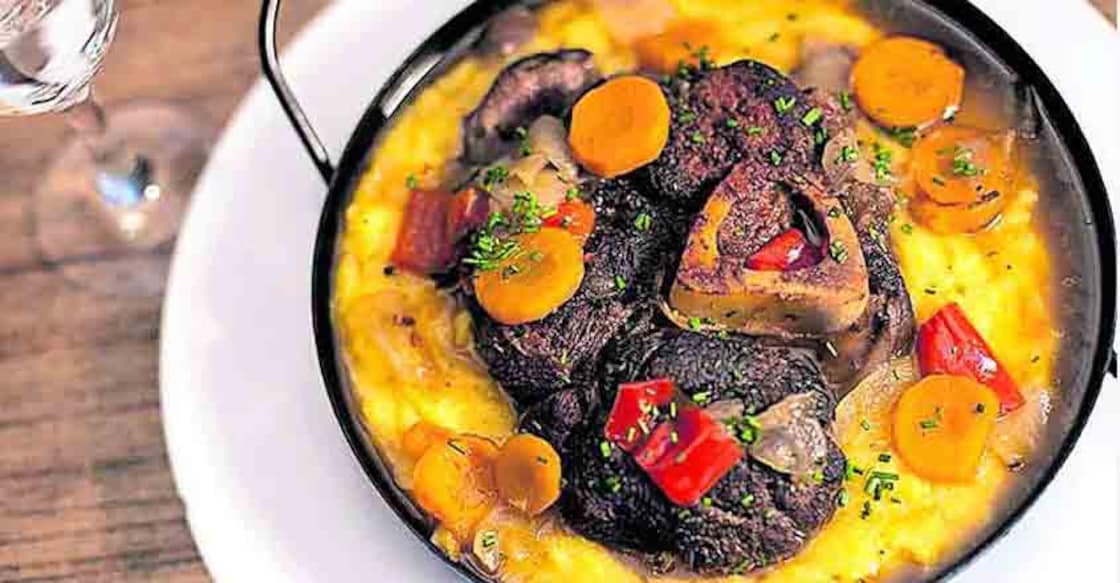Foodie paradise Argentina will leave you craving for more

Mail This Article
You can floor them with food and football! Argentines will take both with their whole heart. The world's eighth largest country in geographical terms, the soccer land is home to a wide tray of varied, traditional dishes. The brawny folks love their meat and do eat a lot of it, morning, noon, and night. Small wonder this, as the world's best beef can be had here. And the average yearly meat consumption per person is a whopping 100 kg! Argentina has another record to its credit. It is the world's largest producer and consumer of beef, pork, and poultry.
Conquests, immigration
The country has a long history of conquests and subjugation. Here's one south American country where one can find strongest influences of Europe in every walk of life. Argentina was a Spanish colony for over three centuries. Much before that, the sprawling land was under the direct control of the once supreme Incas.
The Europeans first landed in Argentina in 1502 and from 1580 it had become a Spanish colony. But right from 1536, the Latin inflow had already begun with hordes of Latinos landing on the shores of the land. Today, Argentina is the most prominent Latin American country where Spanish is as good as a mother tongue.

Blessed with wide carpets of grassland, Argentina turned into a farmer's paradise with the influx of Spaniards who brought with them their domestic animals and turned the virgin land into a flourishing home for dairy trade.
Unmistakably Latin
Large migrations from Britain, Italy, Germany, Russia, and West Asia took place in 1816 once Argentina won its freedom. It's been said that an estimated 66 lakh people settled down in Argentina between 1853 and 1955. The Italian migration and presence was felt the strongest in the 20th century. Though the British brought tea to Argentina, the strongest influences in Argentine cuisine were those from Italy and Spain. They have stayed, and today they are the prominent flavours of the country.
There is a predominant presence of potato, maize, peanuts, pepper, squash, and tomato in almost all dishes. The history of grilling can be traced back to the 16th century when the cowboys started a form of cooking in the open while shepherding their cattle across the wilds of Argentina.

Argentine masalas are a mix of parsley, cilantro, oregano, vinegar, garlic, jalapeno, salt and pepper, fried in oil. Chimichurri is a traditional sauce.
Fruits, vegetables, pulses and oil seeds are farmed extensively here. Argentina has huge exports of fruits like apple, kiwi, peach, pear, avocado, and plum. No meal is complete without trays of differently flavoured salads. Tomato, large onion, lettuce, brinjal, squash and zucchini are the main salad veggies.
Traditional dishes
Traditional Argentines and the early settlers dined on a sort of bread called chipa made with cassava or tapioca. Tapioca fry is had along with all main dishes. The asado involves barbecuing or grilling whole lamb or goat. The Argentines love stew and a popular one is the locro made with pork, white beans and maize. The stew with a chicken-pumpkin combo is the cazuela gaucho.
The curanto is a favourite dish from the Patagonian province. It’s made with seafood, meat, potatoes and vegetables and is traditionally prepared in a pit, about a metre and a half deep, dug in the ground. The bottom is spread with stones which are heated till they turn red. Special types of leaves are spread over the embers and the food to be cooked is placed over them. The food is then covered with leaves over which a wet cloth is spread. The hole is then sealed till the food gets ready.
Carbonada is a dish had by people in northern Argentina when winter sets in. Pumpkin kernel is scooped out and filled with meat, potato, carrot, pepper, maize, raisin and apricot and barbecued. When it’s ready, it forms into a stew-like consistency. It's ideal for breakfast and is as good as a bread or bun.

Italain influence
Milanesa is definitely Italian in descent. It’s a delectable savoury of meat pounded to a soft texture, wrapped with bread crumbs and either baked or fried. It can also be had along with tomato sauce, French fries, egg sauce and mashed potato. Empenada is a stuffed pastry. Beef, potato, egg, chicken and cheese are the main stuffing in this baked snack. Alfajor is a sweet savoury. Condensed milk is caramelised and poured over two cookies. This can be dipped in chocolate or coconut milk.
Italian ice cream has a cool challenger in the form of Argentine super specialty helados. Demiga is a sandwich made with finely sliced white bread, dry meat, cheese and lettuce.
Other Italian specials that sailed in with the immigrants are the pasta, pizza, spaghetti and ravioli.

The mate, also known as chimmarrao, is a special drink. Made with hot water and a herb called yerba mate, it’s one of the hottest items to greet you the moment you land in Argentina.

